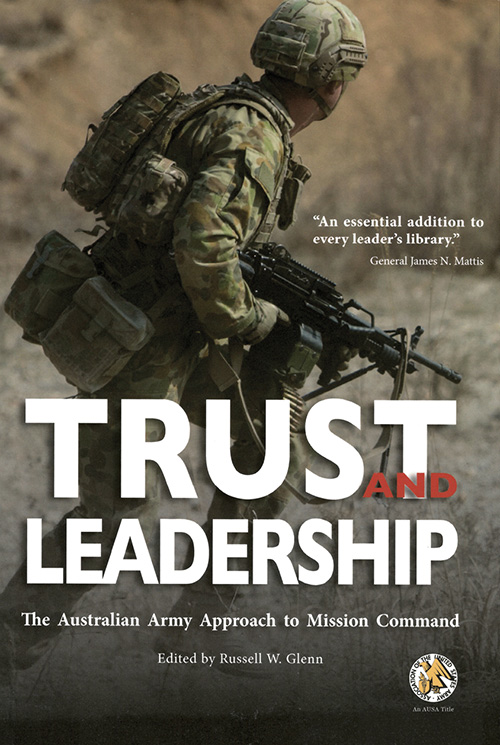Book Reviews

Trust and Leadership: The Australian Army Approach to Mission Command
by Russell W. Glenn (ed.)
University of North Georgia University Press
Dahlonega, Georgia, 2020
411 pages
For more information on accessing this file, please visit our help page.
Reviewed by Howard G. Coombs
Trust and Leadership: The Australian Army Approach to Mission Command is an edited collection written by academics and practitioners who have brought together assessments of the Australian style of mission command using a historical case study approach. The manuscript sections range in chronology from the First World War through all major and minor conflicts of the 20th and 21st centuries, ending with contemporary operations in Afghanistan and Iraq. Although written from an Australian perspective, sufficient explanation, and comparison with American ideas of mission command, make this volume useful to a wide-ranging American and Commonwealth readership.
There is a useful review of mission command concepts provided in both the Foreword and in the Introduction. The individual chapter authors demonstrate sound understanding of the specific bodies of literature related to the topics of their sections. In some cases, these viewpoints are also informed by or derived from personal experience. Most of the chapters for the period after the Korean War fit into this category. These parts of the manuscript are particularly important due to the introspection of the authors regarding their experiences, and the meaning that this contemplation brings to their analyses. One chapter that is particularly interesting deals with the use of mission command in domestic operations. This is a mission command contextualization that has rarely been studied, and indeed, reflects the unique command and leadership insights provided within this edited collection.
Overall, the book certainly presents a sound, scholarly – and professional - analysis of key issues related to the historical development and contemporary challenges of mission command from an Australian, and, to a degree, the United States Army point of view. While there is less primary source work than would normally be done for a purely historical analysis – the breadth and depth of overall research, as well as the amount of personal experience that informs the chapters, ensures that this work is of excellent quality and can be considered rigorous.
Mission command is a topic that is mostly of interest to an academic or professional military audience with foci in military, political, leadership, defence and security studies. This book would be a valuable contribution to those studying these topics. Also, the ease of access given by straightforward writing, well-defined concepts and interesting case studies make Trust and Leadership: The Australian Army Approach to Mission Command comprehensible to a large audience. Overall, it is a superbly-edited volume that is well-written, solidly-researched and tightly put together. It would be a worthwhile addition to the library of any reader interested in command and leadership, as well as in military history.
Colonel Howard G. Coombs, OMM, Ph.D, an infantry officer and long-time Army reservist, is an Assistant Professor at the Royal Military College of Canada, and is currently the Associate Chair of War Studies at the College.







